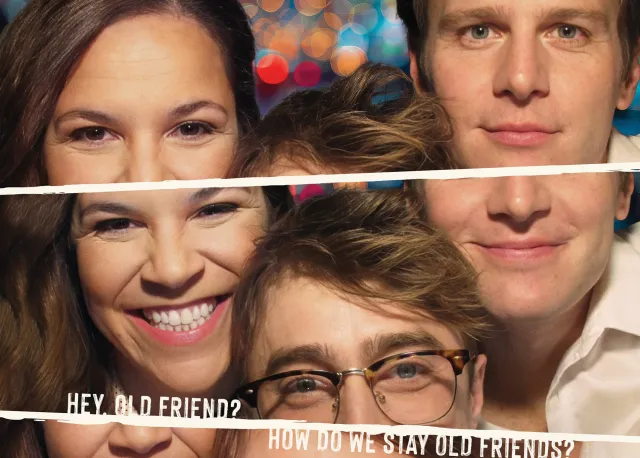
(© Big Apple Circus)
Lots of kids want to join the circus, but Eric Michael Gillett is one of the few who grew up to be a circus director. Gillett, who is helming the Big Apple Circus’ current attraction, Dance On!, is uniquely qualified for the job: He spent 12 years as the ringmaster for Ringling Bros. before embarking on an equally successful career as an acclaimed stage actor, cabaret performer, and director. TheaterMania recently spoke with Gillett about his latest gig.
THEATERMANIA: This is your first time directing a circus. How did the job happen?
ERIC MICHAEL GILLETT: Being part of the Ringling family for so many years, you keep a lot of contacts in the circus world, and over the years, the people at Big Apple have spoken about me being their ringmaster, but I didn’t want to get back in the ring. Then two years ago, I went up to their rehearsal facility to coach their ringmistress for an opening number. Anyway, I had an idea for some time about what kind of circus I’d want to do, because I felt that what binds the circus world together is physical movement, not language. When I got up there, one of my friends told me that Guillaume Duffresnoy was taking over from Paul Binder and becoming the new Artistic Director and he was looking for new stage directors. So I sat down with my pad for 20 minutes and we talked in the tent that afternoon — and then he decided this show was to be his premiere as the Big Apple’s artistic director.

(© Big Apple Circus)
TM: Other than the copious use of music in this show, what else do you think makes it different from other editions?
EMG: Big Apple productions have always had two groups of performers: the corps and the guest artists. But over the last few years, the guests became the star and the corps became the support team, and I wanted to go back to the other way. My whole idea was to start the show by introducing the corps, who would be the family to invite the guest artists in, but then have the guests perform first.
TM: How are some of those corps artists being used differently by you?
EMG: Mark Gindick, the main dancer, is the central character; he’s the host, much more than our ringmaster, Kevin Vernados. He used to be a clown — he was Grandma’s understudy — and it’s been a big step for him to go into the ring without wearing clown makeup. But he gives me 125 percent and is full of physical abandon. When I saw the show, I fell in love with Regina Dobrovitskya, who had been thinking of retiring, but I had a specific idea for her where I would link her throughout the show and use some dancing skills and acting skills, as well as her work as an aerial gymnast. And I think this is the first time Andrey Mantchev, the hand-balancer, has had a major feature.
TM: You’re not only working with kids, you’re working with animals. Was that a given?
EMG: The Big Apple Circus has always had animals, but they are always domesticated ones. We’re using Welsh ponies this year, and it is magical to see them. And we’re also using goats, and the one thing I will say is that anyone who thinks they can convince a goat to do anything when you want them to do it just hasn’t worked with them. So sometimes the show is a couple of minutes longer than other nights.

(© Big Apple Circus)
TM: Did you have immediate ideas for how to use Grandma — aka Barry Lubin?
EMG: Barry and I went to dinner before we started, and I told him I felt Grandma had become a reactive personality, and one of the things I wanted was for him to be more at the center of the piece. Now, Grandma is the instigator, he brings the man who dances into the ring; he brings the child into the ring to fly; he really shows us we can do anything we want to do.
TM: How similar is directing a circus to directing cabaret?
EMG: In cabaret directing at its best, you’re taking an artist’s essence of what they want to get off their chest, and then making them do the show they say they want to do — and circus is a bit like that too. Cabaret and circus also both break the fourth wall and anything can happen on any given night. And I think they’re both more audience-dependent art forms than traditional theater.
TM: But you don’t usually have to entertain a lot of kids at a cabaret show do you?
EMG: True, but as a director or performer, children will hold your feet to fire more than anyone else. They will not be polite; they will fuss and feud if you’re not holding their attention. And that’s the kind of audience you really want.
[Editor’s Note: Circus, a three-part, six-hour documentary that goes behind the scenes of The Big Apple Circus, is currently airing on PBS.]







